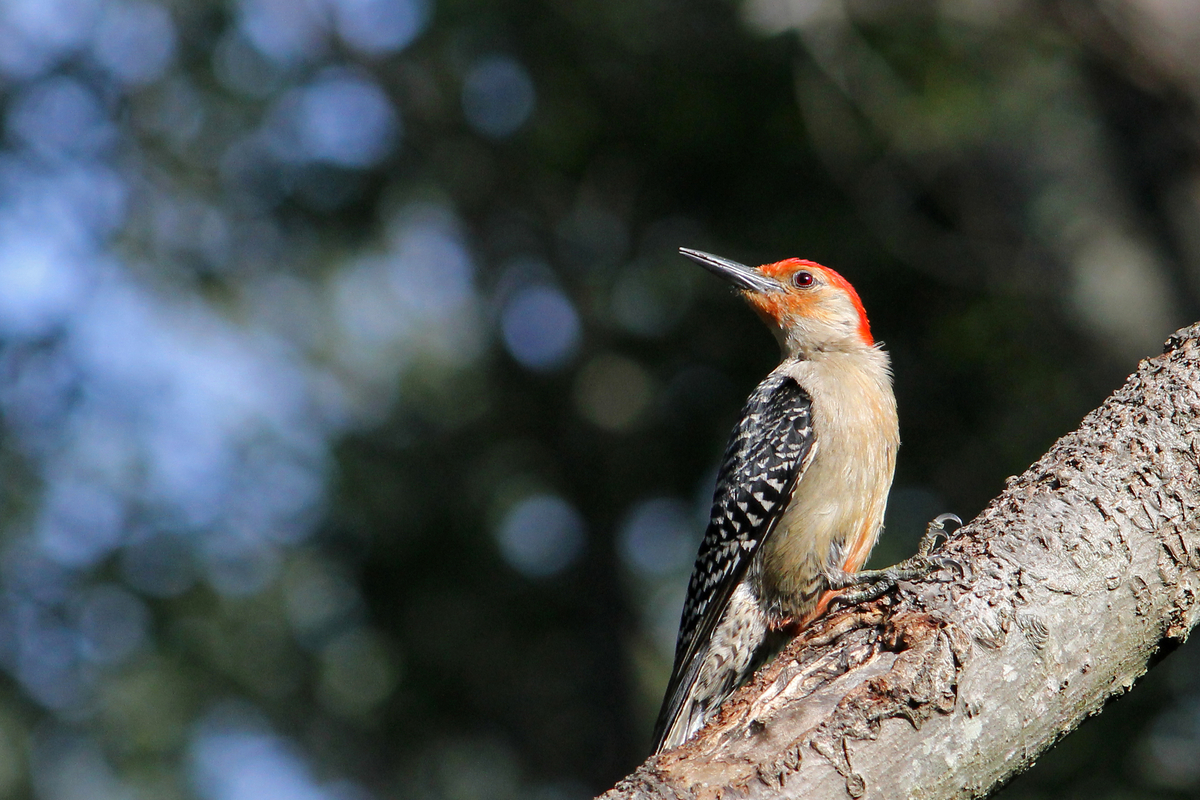Checking Out Woodpeckers in Florida Habitats: Where to Detect These Birds
Wiki Article
Revealing the Tricks of Woodpeckers: Habits, Environment, and Extra
Woodpeckers, with their distinct habits and specialized adaptations, have lengthy interested scientists and nature fanatics alike. By uncovering the enigmas surrounding woodpeckers' actions and environment options, a much deeper understanding of these avian marvels arises, supplying a peek into their fascinating globe.Woodpecker Behavior Insights
In taking a look at woodpecker habits, a fascinating display of specialized abilities and adaptations arises, losing light on their exceptional environmental specific niche. Woodpeckers, recognized for their unique drumming on trees, possess a selection of behavioral traits that contribute to their survival and success in their atmosphere.Furthermore, woodpeckers display an unique feeding habits identified by their ability to essence pests from tree bark utilizing their specialized beaks. Their long, barbed tongues aid in capturing prey, while their strong neck muscles provide stability and precision during pecking activities. This feeding technique permits woodpeckers to access covert insect larvae and remove them with impressive efficiency.
Habitat Preferences and Option
What elements influence the habitat choices and option of woodpeckers? One critical aspect influencing woodpecker habitat selection is the availability of suitable nesting sites. Woodpeckers typically favor woodlands with a mix of fully grown trees that supply sufficient chances for cavity excavation.Additionally, woodpeckers reveal a choice for environments with a plentiful supply of food sources. They are mostly insectivorous, eating beetles, ants, larvae, and other pests located in rotting wood or tree bark. Therefore, woodpeckers tend to prefer woody areas with a diverse insect populace to satisfy their dietary needs.
Additionally, the existence of dead or worn out trees is one more essential factor in woodpecker environment selection. These trees not just offer food resources however also supply appropriate substratum for tooth cavity excavation. Dead trees are important for the upkeep of healthy woodpecker populaces, as they play an important duty in the woodpeckers' life cycle and ecosystem characteristics.
Feeding Habits and Diet Plan Composition
Woodpeckers show a specialized feeding behavior concentrated on foraging for insects within different environments. Their diet plan largely includes pests such as beetles, ants, caterpillars, and spiders, which they find by touching on tree bark and listening for the audio of movement inside. Woodpeckers utilize their solid beaks to drill right into the timber and their long, barbed tongues to draw out target from crevices. In enhancement to insects, woodpeckers likewise eat tree sap, fruits, nuts, and seeds, adding range to their diet regimen depending go to website on the season and schedule of food sources.The foraging strategies of woodpeckers are well-adapted to their arboreal way of life (Woodpeckers in Florida). Their capability to excavate timber not just provides them with food but likewise assists in producing nesting cavities and establishing territories. Woodpeckers play a crucial function in keeping the health of forests by managing insect populations and helping in the decay of wood. Recognizing their feeding behaviors and diet plan structure is important for conservation efforts aimed at preserving these distinct and my sources useful birds.
Drumming Sounds and Interaction
Utilizing rapid drumming audios on different surface areas, woodpeckers use an unique type of communication to signify territory limits and bring in mates. This drumming habits is not just a method of interaction but also acts as a means for woodpeckers to establish their existence within a particular location. The strength, rate, and pattern of the drumming can convey important information to various other woodpeckers around.Woodpeckers use drumming sounds to introduce their existence in a region and to advise off possible trespassers. The loud and repetitive nature of the drumming acts as a clear signal to various other woodpeckers that the location is already declared. This helps in lowering problems and lessening physical conflicts between people.

Survival Adaptations and Specialized Composition

Verdict
Finally, woodpeckers exhibit special habits, such as drumming audios for communication, and have actually specialized composition for survival in their selected habitats. Their feeding habits and diet structure further demonstrate their flexibility to numerous settings. By recognizing these elements of woodpeckers, researchers and guardians can much better protect and protect these fascinating birds and their ecosystems.Report this wiki page